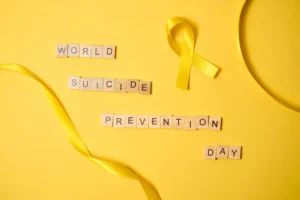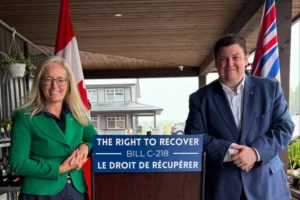
Available in Audio Format:
Nov 21, 2025
There is Nothing ‘Safe’ About Euthanasia in Canada
Health Canada’s 2024 MAID report promises that the government will “help ensure that the framework for MAID in Canada is safe, reflects the needs of people in Canada, protects those who may be vulnerable, and supports autonomy and freedom of choice.” Yet the current Canadian government seems to value individual autonomy above all else
In another report, Health Canada says Canada’s law “has been carefully designed with stringent criteria and safeguards to affirm and protect the inherent and equal value of every person’s life.” Notably, these are the very criteria and safeguards that the government keeps removing to make more people eligible to die at the hands of their doctors.
Euthanasia in Canada began with just end-of-life situations (albeit broadly defined). It expanded to Canadians with an illness or disability who were not dying in 2021. In early 2027, it will expand to include mental illness, unless Parliament passes a bill to cancel that expansion. And the government may soon legalize advance requests for MAID.
It seems perverse to speak about doctors intentionally killing patients “safely”. But let’s evaluate the government’s claims about “safety” on the government’s own terms. Doing MAID safely, to the government and MAID supporters generally, means doing it in a way that nobody is unduly pressured into it – where every MAID death is a “free choice”.
There remains much work to do in advocating for governments and Canadians to care for, not kill, those who are suffering.
Even on those terms, Canada’s so-called safeguards fail to protect vulnerable Canadians. New stories about vulnerable Canadians getting euthanasia instead of care and of families being shocked and hurt by euthanasia deaths abound. There remains much work to do in advocating for governments and Canadians to care for, not kill, those who are suffering.
A recent poll released by ResearchCo found that 52% of Canadians are satisfied with the regulations in Canada’s current euthanasia law, while 24% are dissatisfied. But respondents plainly don’t know the law well. In fact, 46% of respondents said they were opposed to allowing euthanasia for people with disabilities, something which has been legal in Canada since 2021. The poll also found that between 2023 and 2025, the number of Canadians opposed to euthanasia entirely jumped from 12% to 18%.
Impact on Vulnerable Canadians
Many stories have appeared in mainstream media of people in a vulnerable state being offered or accessing euthanasia. Many more don’t make the news. Several veterans have been offered euthanasia, and many more have alleged the same. Doctors asked a woman going in for surgery in Nova Scotia if she knew about MAID. And a woman in British Columbia was offered euthanasia after going to the hospital with suicidal thoughts, looking for help. The CEO of Inclusion Canada also recently noted in a Parliamentary Committee that, every week in Canada, euthanasia is offered to Canadians with disabilities while they seek other services.
Canadians often ask for euthanasia, not as a last resort at the end of life, but as a supposed solution to all kinds of suffering, including mental, social and economic suffering. A quadriplegic woman in Ontario applied for euthanasia because it was easier to access than the supports she needed. And the latest Health Canada annual report on MAID found that isolation, loneliness, and feeling like a burden on family, friends, or caregivers were major factors contributing to patients’ suffering. These are basic care needs, not medical conditions.
Many stories have appeared in mainstream media of people in a vulnerable state being offered or accessing euthanasia.
The Ontario coroner established a MAID Death Review Committee in 2023. That committee has published several reports documenting troubling cases. The committee found that Criminal Code safeguards are not always followed. Some patients who were euthanized should have been deemed ineligible. One woman suffered from multiple chemical sensitivity syndrome, but also had a history of psychiatric care. Social isolation and difficulty securing adequate housing contributed to her request for MAiD. Another man suffered from ulcers and had multiple mental illnesses and chronic suicidal ideation. He had attempted suicide a year before receiving MAID. In yet another case, doctors could give no clear diagnosis of a patient’s condition and euthanized him despite a significant history of mental illness and depression. The Committee highlighted the importance of addressing and resolving suffering rather than proceeding with MAID as a first option.
Other reports reveal that MAID often happens on the same day it is requested. When one woman needed palliative care, she also requested MAID, but her doctor noted she preferred palliative care. She was denied palliative care, and her spouse could not care for her and asked for a MAID assessment. She was deemed eligible for MAID and was euthanized the same day. Patients who refuse treatment are sometimes euthanized without the safeguards required for cases where natural death is not reasonably foreseeable. Further, patients with dementia and Alzheimer’s are being euthanized despite potential coercion or influence to die by MAID and despite questions about their capacity to give informed consent. Again, many of these cases raise questions about whether the existing safeguards are even being applied.
Impact on Families
Families are a key factor in protecting their loved ones from euthanasia. But so often, families’ perspectives are disregarded or condemned. Yet families often raise concerns about their loved ones receiving euthanasia. A BC woman was euthanized despite her family’s objections that she had a mental illness that needed treatment. Her daughters learned about the MAID application just two weeks before her death. An Alberta woman with autism was approved for MAID despite her father’s attempts to prevent her death through the courts. But the court would not stop the euthanasia death, saying the choice was hers alone.
But euthanasia is never only about autonomy. Rather, it always impacts those around a person. Benjamin Turland recently shared his story about how both his grandmothers recently died by euthanasia. He emphasizes that euthanasia is not a victimless decision. Yet, when he speaks out, he is told to stop talking and accept their choice.
Euthanasia is often presented as a beautiful experience for everyone involved. But increasingly, Canadians are seeing that the reality is otherwise. In fact, a recent study of family members of euthanized patients found that they took three different views. One-third saw MAID as a dignified way to die. Another third saw it as traumatic. And a third saw it as unjust, the result of failing to provide necessary supports.
If someone says the system is safe and that safeguards are adequate, numerous examples show just how broken the system is.
Oversight
There is also a serious lack of oversight of euthanasia deaths across the country. In Ontario, the coroner’s office found at least 428 cases of possible noncompliance with the Criminal Code between 2018 and 2023. Only four of these were referred to the College of Physicians and Surgeons of Ontario for review, and none were reported to the police.
The B.C. Ministry of Health’s MAID oversight unit only reviews MAID-related paperwork after the fact, and does not make findings of misconduct or impose disciplinary action. In rare cases, the oversight unit may refer concerns to the regulatory college or law enforcement. But the Ministry has cautioned that “strict or severe use of referrals … may discourage physicians or nurse practitioners from providing MAiD despite high demand.” Despite discovering nearly 3,000 problem cases, the unit has made only 22 referrals to regulatory bodies and just two to law enforcement since 2018.
Quebec’s Commission on End-of-Life reported 23 cases of possible non-compliance in 2022-2023. In 16 of these, the commission believed the patient did not have a serious and incurable illness – a key eligibility criterion.
Some doctors have become regular MAiD providers. In 2023, just 89 medical practitioners were responsible for over 5,300 euthanasia deaths, averaging 60 deaths each in one year. Canada’s “safeguards” are obviously not slowing them down much.
Conclusion
Euthanasia begins with the idea that certain lives are not worth living due to suffering. It then expands to include more and more groups. In Canada, we are seeing that supposed safeguards are meaningless. We must never see euthanasia as a solution for suffering. Rather, we can continue to care for, not kill, those who are suffering. And if someone says the system is safe and that safeguards are adequate, numerous examples show just how broken the system is.


